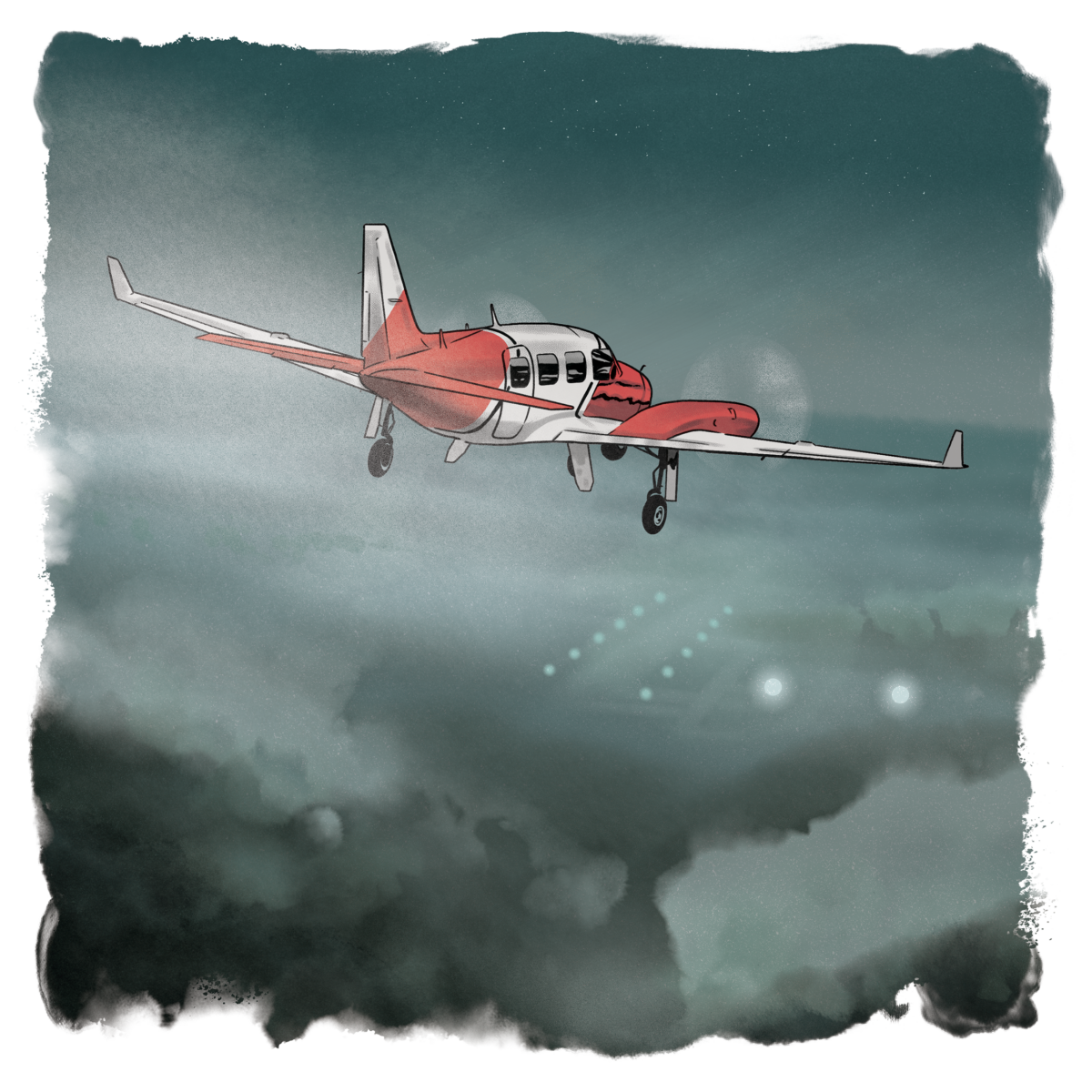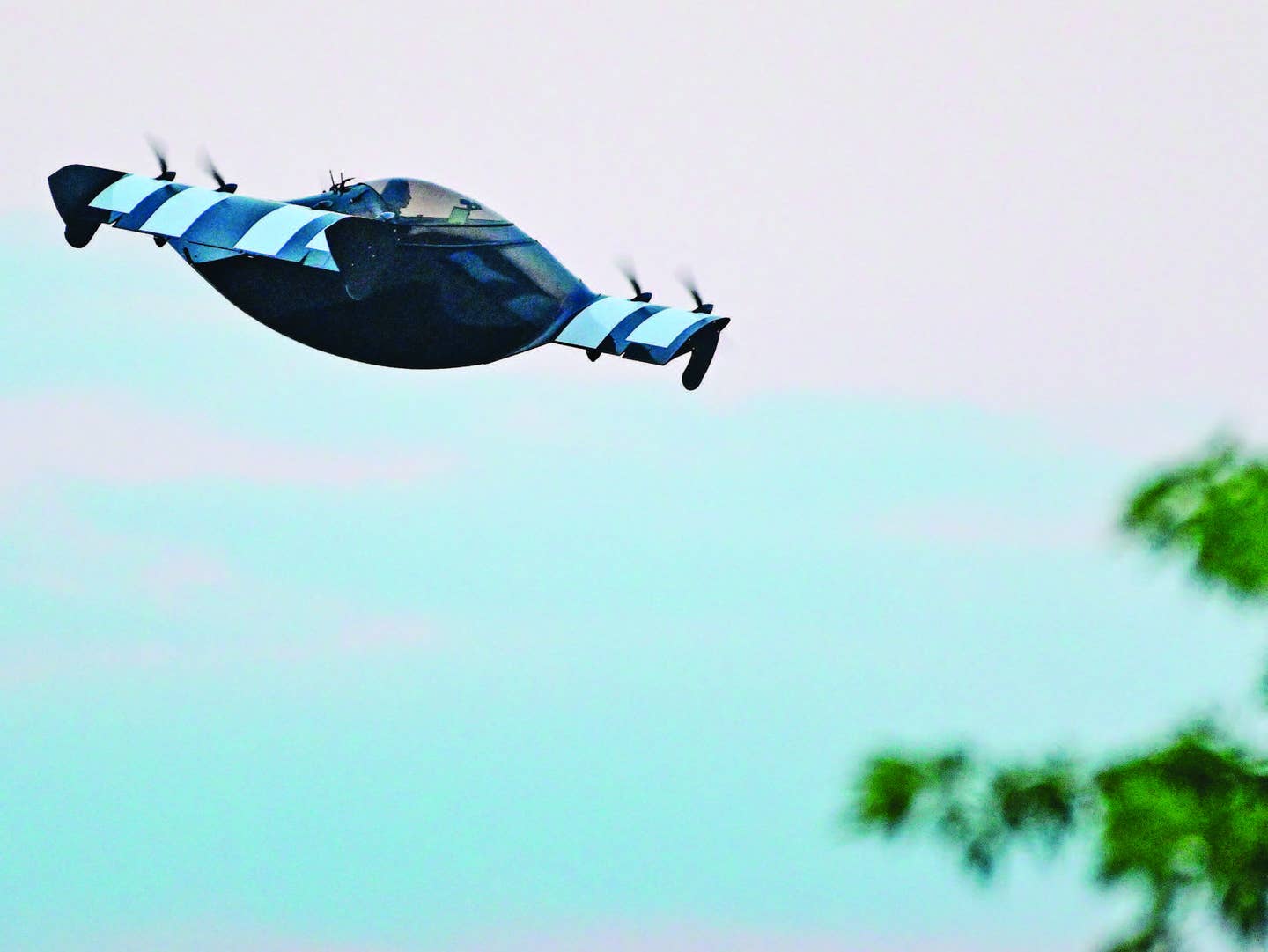Lessons Learned From Flying the Mail
After more than 30 years and 25,000 hours of flying as a freight dog, this pilot knew the unexpected and unplanned would happen.

[Credit: Joel Kimmel]
In 1976, I was an inexperienced 24-year-old pilot when I got my first “real” flying job. I was hired by a small commuter airline to fly mail at night and passengers during the day in Piper Navajo and Navajo Chieftain twins.
A normal sequence started on day one at 10:30 p.m. in Charleston, West Virginia, flying east to Baltimore, Maryland, then back west to Martinsburg, West Virginia, then further west, ending in Cumberland, Maryland, at 3:30 a.m. the next morning. At 11:30 a.m. on day two, I would fly passenger runs until 9 p.m., then at 9:30 p.m., pick up the airmail run back to Charleston, finishing up around 1:30 a.m. on the third day. At every stop, I had to unload and reload 1,600 pounds of mail and somewhere find time to check the weather and get something to eat.
If you're not already a subscriber, what are you waiting for? Subscribe today to get the issue as soon as it is released in either Print or Digital formats.
Subscribe NowThis was all-weather, single-pilot flying. You didn't cancel an airmail run—you flew.
One night, on the Baltimore to Charleston leg, I had an exceptionally heavy load of mail, so I elected to carry less fuel than normal. The weather was forecast to be good VFR at Charleston, so I had no problem with this fuel load. However, when I arrived in the Charleston area, it was (in the old sequenced teletype-style report format) W0X0F, which means “Indefinite, Ceiling Zero, Sky Obscured, Visibility Zero in Fog.” I got the weather in Huntington, West Virginia, and Cincinnati, Ohio—Huntington was down too, but above minimums, and Cincinnati was good VFR. I figured if I flew that direction, I would arrive in Cincinnati with about 15 minutes of fuel, so I chose to fly on to Huntington.
As I continued westbound, passing over the Charleston VOR, Charleston Approach informed me the visibility had just come up to a mile. They then gave me a 180-degree turn back towards the airport, where I could see that the departure end of Runway 23 was clear but the approach end was still covered in fog. They also informed me that this was closing back down pretty fast, and by the time I could get vectored for the approach, it could very easily be zero visibility again. What could I do to get safely and legally in with only 1-mile visibility? The contact approach.
I was only 4 miles from the airport when they cleared me for the contact approach to Runway 5. Fortunately, I had already reduced power and extended the gear and flaps, lining up on the runway and slowing down to get the rest of the flaps out. One steep descent and landing later, I was safely on the ground in Charleston. As I was taxiing in, the visibility dropped rapidly, and the tower informed me that the reported visibility had just sunk to zero again. As I was taxiing the aircraft from the APO (Airport Post Office) to parking, ground control informed me that Huntington had a severe thunderstorm earlier that night, which had knocked out their lighting. I would have arrived at Huntington and not been able to land. Thanks to a momentary break in the fog and the contact approach, I was able to deliver the mail into Charleston instead.
After this incident, I vowed to never put myself in a situation where I did not have enough fuel for other alternatives, and it changed the way I looked at alternate airports—for example, Beckley, West Virginia, sits at a higher altitude and is less susceptible to fogging in. A knowledge of what the FARs said about what I could do was also important.
On another night, flying from Baltimore to Charleston, I was over Elkins, West Virginia, at 10,000 feet msl, and had been experiencing light to moderate icing. I changed altitudes three times to try to get out of it. After having to cycle the wing deicing boots multiple times, I noticed that the aircraft was not regaining speed like it normally would. Hearing the loud banging of ice sliding off the propellers and hitting the fuselage told me that the propeller deicers were working normally. There is only one deicing light, on the left wing, and it was pitch dark outside, so I thought to get my flashlight and shine it on the rightwing. There was almost an inch of ice on that wing: The deicing boot had failed.
I knew I was in trouble and thought about descending, but I realized that would be an irreversible decision—and I could use my altitude to keep my airspeed up if I had to. My airspeed was stabilized at 150 mph (about 130 knots). I thought, ‘OK, she is flying good, so this is a good airspeed and I can get the gear down at this speed.’ I did not know how much ice was on the tail, so lowering flaps would probably have not been a good idea.
I informed ATC of my problem and was vectored onto the ILS Runway 23 at Charleston. I traded my altitude to keep airspeed up and got the runway in sight about 5 miles out. I put the gear down on short final and kept my airspeed at 150, flaring out over the numbers and getting it stopped before I ran off the cliff on the departure end. I found out from the mechanics that with the rain in Baltimore, when I tested the boots before takeoff, some of that water got sucked inside the boot through a pinhole, and this later froze the valve closed, not allowing any air into the boot to inflate it. With this incident, I learned that instead of just reacting, fly the airplane first then think things through carefully so you can make the right decisions.
One other night I was flying from Martinsburg to Cumberland at 3 a.m. I had 1,000 pounds of mail in the back, and it was my last leg of the night. About 30 miles out, the manifold pressure on my right engine went from 30 inches to 23 inches—I had lost the turbocharger. To me, there were three possibilities: 1. The turbocharger had suffered an internal failure; 2. The wastegate had failed; 3. The exhaust manifold had failed.
Well, one and two were not too bad, but number three was, and it would be pumping 1,800-degree-Fahrenheit air into the engine compartment. It took me all of about five seconds to think about this before I shut the engine down. The only approach at that time was a circle-to-land VOR approach to an airport surrounded by mountains and it was night. On the approach, I broke out of the clouds at about 300 feet above minimums (about 1,500 feet agl) and was able to see the runway lights about 5 miles out. I was then able to set up a normal base-to-final turn and land safely at Cumberland. This taught me the importance of knowing my aircraft systems and how they worked so that I could act accordingly. Also, I learned the importance of situational awareness, knowing where I was and what was underneath me.
In more than 30 years and 25,000 hours of flying NAMC YS11s, Douglas DC-9s and DC-8s, and Boeing 767s as a freight dog, I know the unexpected and unplanned will happen: unforecast weather, mechanical failures, even traffic. I learned how to deal with these things by just stopping and thinking first and applying all of the above lessons learned.
This article was originally published in the December 2022/January 2023 Issue 933 of FLYING.

Sign-up for newsletters & special offers!
Get the latest FLYING stories & special offers delivered directly to your inbox







